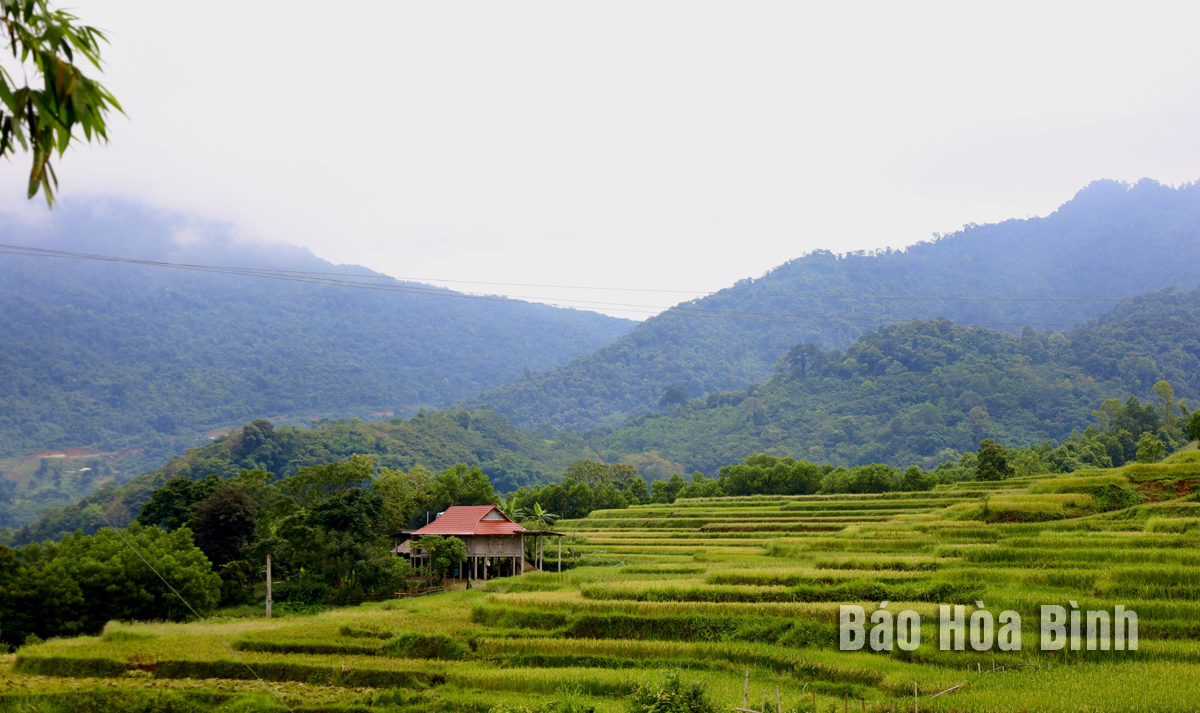
The People’s Committee of Hoa Binh province has issued Plan No. 185/KH-UBND on the organisation of the Hoa Binh Culture - Tourism Week 2024 from October 24 to November 4.

The beauty of terraced
fields - where the Mien Doi terrace field festival will take place.
The main activities include the Hoa Binh Culture - Tourism
Week and the Da River Fish-Shrimp Festival at the provincial scale, and the
Mien Doi Terrace Rice Festival at the district scale.
As scheduled, the Hoa Binh Culture - Tourism Week will take
place at Hoa Binh Square from October 25-27 with notable activities such as a
ceremony to receive a certificate which recognises archaeological sites of Xom
Trai Cave and Lang Vanh stone roof as special national relic sites, opening and
closing ceremonies and low-altitude fireworks display and a costume show of Hoa
Binh’s ethnic groups.
The second Da River Fish-Shrimp Festival will be held at the
provincial Trade and Exhibition Centre from October 24 to November 4. It will
feature a range of activities such as a fisherman's festival, releasing
lanterns on the Da River, exhibitions and auctions of specialty fish products
from Hoa Binh Lake, and a fishing tournament on the lake associated with
promoting culture and introducing its scenic beauty.
The Mien Doi terrace field festival will take place in Lac
Son district’s Mien Doi commune from November 2-3, with special activities
including a new rice festival of the Muong ethnic group, playing Muong gongs on
the terrace field, paragliding experiences and exploring the terraced fields.
The Hoa Binh Culture - Tourism Week 2024 aims to
honour and affirm the cultural values of the locality, showcasing the beautiful
landscapes, unique cultural identities of the ethnic groups, attractive tourist
spots, local agricultural products and One Commune One Product (OCOP) items to
attract domestic and international tourists.
With an increasingly vibrant and widespread emulation movement aimed at building cultured residential areas and cultured families, Yen Thuy District has been making steady progress toward improving both the material and spiritual well-being of its people, while fostering a civilized, prosperous, beautiful, and progressive community.
Once lacking recreational spaces and community facilities, Residential Group 2 in Quynh Lam Ward (Hoa Binh City) has recently received attention for the construction of a new, spacious, and fully equipped cultural house. The project followed the model of state support combined with public contributions in both labor and funding.
The "All people unite to build cultural life" movement, which has been effectively integrated with Kim Boi district’s socio-economic development goals, is fostering a lively spirit of emulation across local residential areas, hamlets, villages, public agencies, and enterprises. In addition, through the initiative, traditional cultural values are being preserved and promoted, while community solidarity and mutual support in poverty reduction and economic development are being strengthened.
A working delegation of the Hoa Binh provincial People’s Committee led by its Permanent Vice Chairman Nguyen Van Toan on June 11 inspected the progress of a project to build the Mo Muong Cultural Heritage Conservation Space linked to tourism services in Hop Phong commune, Cao Phong district.
Born and growing in the heroic land of Muong Dong, Dinh Thi Kieu Dung, a resident in Bo town of Kim Boi district, in her childhood was nurtured by the sweet lullabies of her grandmother and mother. These melodies deeply imprinted on her soul, becoming an inseparable part of her love for her ethnic group's culture. For over 20 years, this love for her hometown has driven Dung to research, collect, and pass down the cultural values of the Muong people to future generations.
In the final days of May, the Ethnic Art Troupe of Hoa Binh Province organized performances to serve the people in remote, mountainous, and particularly disadvantaged areas within the province. These were not just ordinary artistic shows, but they were the meaningful journeys aimed at spreading cultural values, enhancing the spiritual life of the people and contributing to the preservation of ethnic minority cultural identities.



